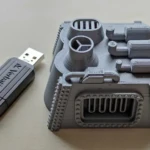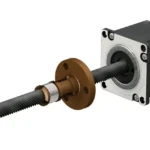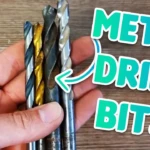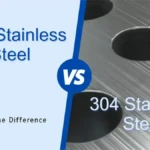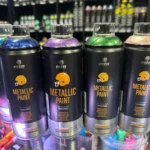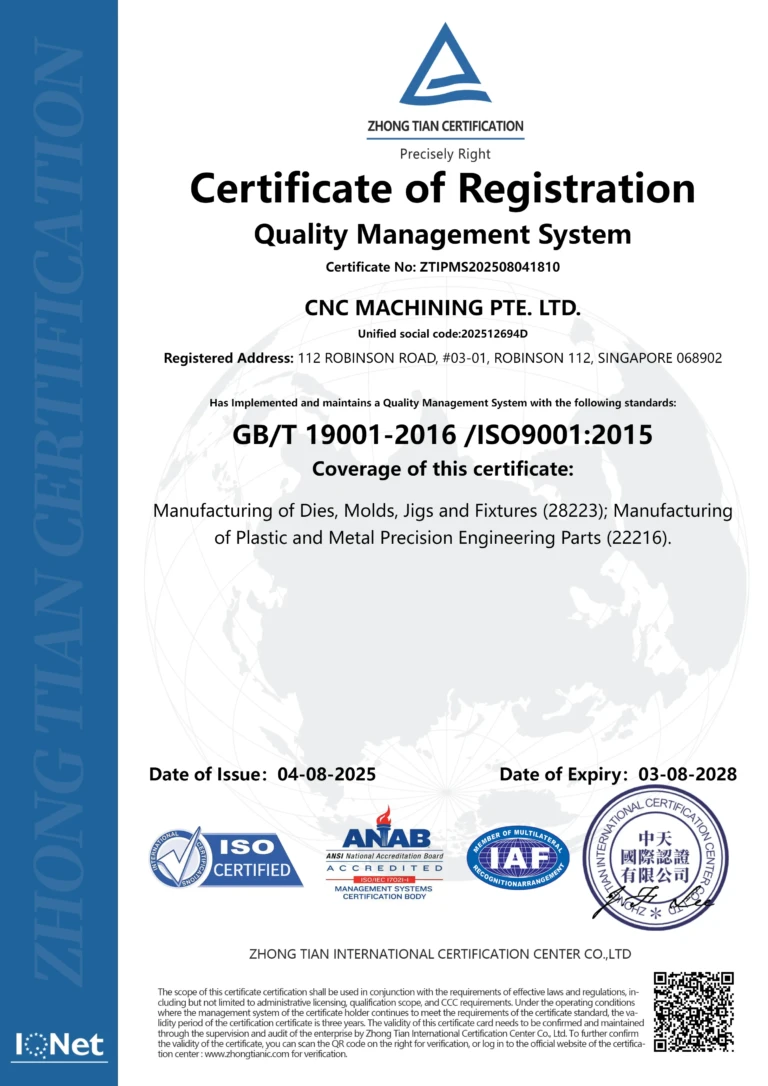The cutting edge of speed: Mastering how CNC dynamics can reduce machining time and improve quality
In a highly competitive manufacturing world, deadlines are tight and accuracy is crucial, and achieving faster turnaround without sacrificing quality is the holy grail. For complex components, especially those that require complex geometry or are made of challenging materials, processing time is often a critical bottleneck. This is first-class science CNC dynamics Enter the spotlight. As a leading professional five-axis CNC machining manufacturer, Greatlight understands that leveraging dynamics is more than just a feature – it is essential to deliver unparalleled value to customers. Let’s dive into how mastering power allows us to significantly reduce time (38% is usually just the starting point!) while ensuring that parts meet the strictest standards.
Beyond Simple Speed: What is CNC Dynamics?
At first glance, CNC machining seems simple: design a part, program the tool path, install inventory and let the machine run. But the reality is more complicated. CNC dynamics refers to the complex interaction between cutting tools, workpieces, machine tool structures and the cutting process itself. This interaction is controlled by force, vibration (quiver), tool deflection, thermal effects and machine stiffness.
- chatter: The most notorious dynamic problem is the chat-uncontrolled, self-excited vibrations that leave ugly marks on the surface and dramatically accelerate tool wear. It forces operators to reduce feed rates and cuts, and the depth of disability productivity.
- Tool Deflection: Thin, long tools or those that cut deep pockets, bend under pressure. This deflection results in inaccurate dimensions, poor surface effects and potential tool breakage.
- Stability limitations: Each cutting process has a stable leaf diagram – the diagram shows a combination of spindle speed and cutting depth for stable cutting. Operation in external stable areas can cause chatting and inefficiency.
Ignore these dynamic force compromises: avoid slow vibration (blowing cycle time), or aggressively reduce the risk of dangerous quality and tool failure. Not acceptable in high-precision, high-mixed small batch environments.
Why the excellent performance of five-axis does not matter with optimized dynamics
As an expert in five-axis CNC machining, Greatlight operates at the peak of geometric complexity. While the five-axis offers incredible potential for complex contours and reduced settings, it introduces dynamic challenges at the same time.
- Complex tool paths and directions: The reorientation of the constant tool axis changes the mechanics of point-by-point cutting. Forces to constantly shift directions, requiring dynamic awareness and adaptability.
- Longer overhang: Achieving deep cavity or tilt features often requires longer tool extensions or handle adapters, thereby increasing sensitivity to deflection and vibration.
- Material Removal Rate (MRR) Optimization: Truly maximizing MRR in complex geometries requires dynamic optimization strategies tailored to specific participation conditions at each point in the toolpath. Simple "Rough/Pretty" The pass is not enough.
How Greatlight can turn dynamics into your competitive advantage by saving 38%+ time
Taming these complexities is not magic. It is a combination of cutting-edge equipment, complex engineering and deep process expertise:
- Advanced simulation and prediction: We utilize state-of-the-art CAM software equipped with integrated virtual machining capabilities. Using detailed machine models (merge tool holders and tools) and material data, engineers simulated the machining process long before touching the metal. This predicts potential chat areas, deflection issues and hot spots. Modify tool route or speed/extraction almosteliminating expensive trial and error on store floors, resulting in a stable optimization program from the outset.
- High-performance machining (HPC/HSC) strategy: We utilize dynamically designed high-performance tool paths. These strategies maintain a consistent angle of participation, minimizing changes in rapid directions and avoiding high radial engagement that triggers tremors. Chip sparseness is maximized, allowing for higher feed rates without making cutting forces impractical.
- Machine monitoring and adaptive control: Our advanced five-axis CNC center features integrated vibration sensors and complex control systems. While high-fidelity simulations can solve most problems in advance, real-time monitoring provides an additional layer of security. If unexpected resonance is detected, some systems can even make smaller automatic adjustments during processing.
- Strict tool selection and settings: Dynamics are deeply influenced by tool selection (geometry, paint), tool holder type (avoiding the Rube Goldberg adapter stack!), and setting stiffness. Greatlight carefully selects tools and preset holders to maximize the stiffness and stability of the system, greatly reducing the potential of deflection and chat points. Implementing a balance tool holder is crucial.
- Proprietary process database: Over the years of experience processing many materials and geometric shapes has enabled us to build a broad proprietary database. These databases correlate material behavior, tool configuration, and machining parameters with real-world dynamic performance, providing faster and more accurate process planning for new projects.
Real benefits: Cut time, everything else
By viewing CNC dynamics as a problem, but as a core parameter of optimization, Greatlight customers gain specific benefits:
- Significantly reduced cycle times (38%++ is common): This is the benefit of the title. Optimized feed, speed, tool paths and minimized chat average components take less time on the machine.
- Enhanced part quality and consistency: Prevent chatting and deflection to eliminate surface fan shapes, differences and dimensional errors. Parts always encounter or beat the most stressful tolerances on the machine.
- Extended tool lifespan: Stable cutting greatly reduces impact load and vibration-induced wear, thereby greatly improving the life expectancy of expensive cutting tools.
- Reduce processing costs: Shorter cycle times + longer tool life + less waste + minimize unplanned downtime = significantly reduce the total cost per part.
- Faster time to market: Faster machining translates directly into faster delivery of high-quality prototypes or production parts, thus accelerating your product development or release schedule.
- Ability to effectively handle challenging materials: Materials that are prone to vibration or work hardening (such as titanium, some aero alloys, hardened steel) are solved confidently with dynamic stability.
- One-stop efficiency: Leveraging our comprehensive post-treatment (heat treatment, surface finishes, like anodization, electroplating, painting) and our optimized machining provides a seamless, efficient, high-quality end-to-end solution.
(No upper limit claim!)
although "38%" It may be a compelling number that illustrates the substantial savings obtained from dynamic optimization, and it is crucial to understand that this is highly project-dependent. Simpler prismatic parts may save 20%, while highly complex impellers or turbine blades manufactured with an optimized five-axis strategy may make savings of more than 50% or even higher.
in conclusion
In the relentless pursuit of manufacturing excellence, refuting the complexity of CNC Dynamics is a luxury that competitive manufacturers cannot afford. At Greatlight, we see dynamics as the fundamental link between original machining potential and tangible results – faster production, impeccable accuracy, reliable reliability and optimal cost-effectiveness. Our investment in advanced five-axis technology, coupled with deep expertise, can predict, simulate and control dynamic forces during machining, enable us to be consistent Cutting cycle time – Achieve 38% reduction results while improving the quality standards of complex metal parts in various industries. We transform the complex physics of processing into your tangible competitive advantage. When precise customization of the peak performance of the part is not negotiable, Great Designed for delivery. Customize your precision parts now at the best prices!
FAQs (FAQs): CNC Dynamics & Greatlight Services
-
Q: What is the reason "chatter" Why is this a problem in CNC machining?
- one: Chat is an unstable vibration between the cutting tool and the workpiece during processing. This is mainly caused by the cutting process itself, which stimulates the natural resonant frequency in the tool engineering system. It can produce poor surface finishes (visible corrugations), resulting in excessive tool wear, which can cause tool breakage, reduce the strength of cutting parameters, and ultimately greatly increase cost and cycle time.
-
Q: How does Greatlight’s use of advanced CAM software actually help dynamics?
- one: Modern cam systems, like the strongly used cam systems used on Greatlight, incorporate virtual machining technology. They perform physics-based simulations to simulate how cutting forces affect the use of specific machines, tool holders and tool extensions. This allows our engineers to visually identify tool route segments that are prone to vibration forward Processing begins. We can then modify the toolpath strategy, adjust the spindle speed to find a stable area, or optimize feed speed to significantly reduce or eliminate the risk of pre-reducing or eliminating chats, thus saving valuable time and material.
-
Q: My parts involve very deep pockets and thin walls – very easy to deflect. Is dynamic optimization really helpful?
- one: Absolutely! Dark features and thin walls are classic high-risk areas for tool deflection and chat. Here, the five-axis strategy is combined with dynamic optimization to truly shine. We can:
- Leverage multi-axis tool orientation strategies to provide maximum tool support while optimizing access to functionality.
- Implementation "Trochoidal" or "peel" The milling strategy will greatly reduce the radial force of the radial loading tool.
- Based on dynamic stability limitations, precise control is gradually controlled and progressively carried out, thus minimizing deflection.
- Choose specialized, highly rigid tools designed for challenging geometric shapes. Simulating these processes beforehand gives us confidence in the strategy.
- one: Absolutely! Dark features and thin walls are classic high-risk areas for tool deflection and chat. Here, the five-axis strategy is combined with dynamic optimization to truly shine. We can:
-
Q: Can you optimize dynamics? any Material?
- one: Yes, the principle of dynamic optimization is generally applicable. but, method and data Need to be specific to substance. "Harder" or "embroidery" Materials (e.g. titanium, inconel, hardened steel) usually present greater dynamic challenges than softer aluminum or steel. We leverage an extensive material-specific machining database built on countless projects and leverage unique cutting force coefficients defined in the cam system to ensure that the simulation accurately reflects reality. Material properties are essential for accurate dynamic predictions.
-
Q: What are the secondary benefits of dynamic stability besides faster cutting?
- one: There are many chain reactions:
- Top surface finish: Smooth Cut = Smooth surfaces that reduce or eliminate secondary finish requirements.
- Extended tool lifespan: The sharp reduction in vibration and impact loads means that the edge lasts longer.
- Improve accuracy and geometric integrity: Reduced tool deflection directly translates into hitting tighter dimensional tolerances and maintaining true geometric forms.
- Consistent part quality: The stable process means that the first part on the machine is as good as one percent. Reliability is key.
- Lower cost: Less scrap/remakes, less tool consumption, less machine time, less energy.
- one: There are many chain reactions:
-
Q: How is your one-stop post-processing suitable for optimized processing?
- one: seamless. Excellent by delivering "The original" Dimensional accuracy and surface finishes are optimized dynamically, and we minimize the amount of remedial work or masking during post-processing of painting or plating. Parts are often moved more efficiently through the entire stage. More importantly, our expertise throughout the process chain enables us to plan for optimal surface preparation forward Processing even begins, ensuring specifications are completed without over-treatment or bottlenecks.
- Q: I have a challenging component design. How do I start with Greatlight?
- one: Grempliem thrives on complexity! Simply [Contact Us](/touch – Replace with the actual link) or upload 3D CAD files directly to our platform [Link to RFQ/service page]. Our professional engineering team will analyze your design, consider materials and tolerances, and apply our in-depth understanding of the physics and dynamics of machining to recommend the most effective and reliable manufacturing strategies. We will provide a quote outlining the potential reduction in lead time that can be achieved through our optimization process. Give Greatlight engineers the speed and accuracy.


